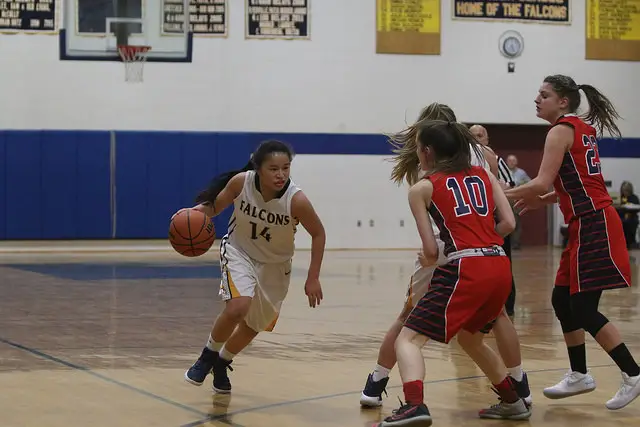A senior at Charles Henderson High School in Alabama, Maori Davenport is considered to be one of the top high school basketball players in the U.S. right now. She committed to playing basketball at Rutgers for her collegiate career earlier this year.
Unfortunately, due to a ruling in November by the Alabama High School Athletic Association (AHSAA), Davenport was deemed ineligible to play her final season of high school basketball. An emergency temporary motion granted by a Pike County Circuit Judge on Jan. 11 is allowing Davenport to play for her school for now.
Over the summer, Davenport represented the U.S. in the FIBA Americas U18 Championship. Although she still had a year left of high school eligibility, USA Basketball mistakenly sent her a check for $857.20. After the error was realized, Davenport returned the money.
The AHSAA does not allow for student athletes to receive payments of more than $250. So although the check was a clerical error and the money was returned, Davenport sat out 43 days of her senior season because of the mishap.
Davenport was not the only high school player who received misallocated money. Anaya Peoples and Aijha Blackwell also received checks from USA Basketball.
“A high school student from Missouri has also been ruled ineligible for this basketball season for accepting the lost wages payment from USA Basketball, Johnny Hardin, the Central Board of Control president noted in a statement.
Initially, Peoples faced a similar fate as Davenport. However, after she repaid the money to USA Basketball, her eligibility was reinstated. Meanwhile, Blackwell is currently in the process of sending the money back and is transferring schools.
Normally, USA Basketball determines whether or not a player still has high-school eligibility before sending a check for lost wages to ensure that players do not accidentally or unknowingly violate amateur rules that exist in many states.
The checks received by Davenport, Peoples and Blackwell are the first recorded instances of players inadvertently being sent checks, according to Craig Miller, the chief communications officer for USA Basketball.
“I’m starting almost my 30th year at USA basketball and this has never happened before,” Miller said said in a statement. “We’ve paid probably thousands of kids over the years legitimately.”
According to Miller, differing policies for players in different states caused the error to occur.
“What’s legal in Colorado may not be necessarily allowed in Texas. That is where the error happened,” Miller said. “There should have been a call to the Alabama state high school association to see if the payment that everybody else was getting was permissible, and that didn’t happen.”
Fortunately for Davenport, the NCAA has decided that this will not affect her college eligibility. However, for other prospective collegiate athletes, the ability to participate in their respective sport can play a huge role in attending and affording a higher education.
“Three years of experience on a rowing team in high school opened the door for me to contact schools,” Jessica Lanz Ramirez, a coxswain for the Old Dominion University women’s rowing team, told The College Post. “I ultimately chose ODU because they showed the most interest in my academic and athletic skills.”
For Lanz Ramirez, her athletic capabilities opened a pathway to the university that would not have otherwise existed.
The cost of higher education in the United States has continued to steadily increase over the past few decades. According to the National Center for Education Statistics, the cost of tuition, room and board has more than doubled over the last thirty years. As the cost of education continues to increase, students are being forced to find more ways to finance the cost of their education.
For many students, athletic scholarships present themselves as a saving grace; and as the value of these athletic scholarships increase, so does their impact.
“Participating in athletics was my only option if I wanted to go to a four-year college,” Lanz Ramirez said. “My scholarship covers about 40 percent of tuition, room and board. The rest is being paid with whatever FAFSA offers me each year.”
While Maori Davenport’s situation is an anomaly, it brings awareness to the rules that exist within collegiate and high school sports. If Davenport had been a college student, she still would only be allowed to accept $300 per week for international play, according to NCAA rules.
Davenport’s situation also brings to light the importance of a student-athlete’s athletic ability and eligibility. For many, athletic participation allows academic opportunities that may not otherwise be present. Therefore, threats to a student-athlete’s athletic eligibility inherently threaten their academic future as well.
Lincoln University Basketball Team Members Facing Felony Charges



